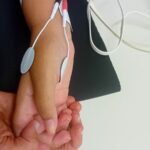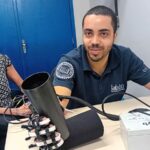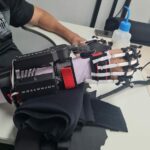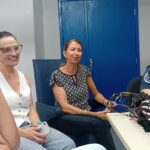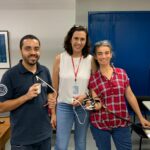Combining Functional Electrical Stimulation (FES) to Elicit Hand Movements and a Mechanical Orthosis to Passively Maintain Wrist and Fingers Position in Individuals With Tetraplegia: A Feasibility Test
IEEE Transactions on Medical Robotics and Bionics
We have developed a new approach to assist
prehension by combining functional electrical
stimulation (FES) and a motorized orthosis: ORTHYB.
The aim was to induce movements of fingers, thumb, and
wrist joints by activating muscles using surface FES and
locking joints in desired positions using electric motors,
to reduce muscle fatigue and enable prolonged grasping
of objects. Another hypothesis was that the mechanical
orthosis would improve grip quality by constraining joint
positioning and guiding movements. The functionality
and acceptability of this hybrid orthosis were tested on
five participants with upper-limb paralysis due to spinal
cord injury. The evaluation was carried out by
monitoring the quality of grip for 30 seconds on 3
different objects; perceived effort using the Borg RPE
(Rating of Perceived Exertion) scale; pain using visual
analog scale (VAS); acceptability using QUEST (Quebec
User Evaluation of Satisfaction Technology with
Assistive Technology) scale and SUS (System Usability
Scale). Preliminary results indicate that the hybrid
orthosis provides added value compared to FES alone.
The scores obtained in terms of functionality were in
most of the trials greater than or equal to those obtained
with FES alone. Object grasping was possible for 30
seconds without muscular fatigue affecting grip quality
Read the paper : https://inria.hal.science/hal-04660558/document
See also : https://www.youtube.com/watch?v=tCz52tDyO6

